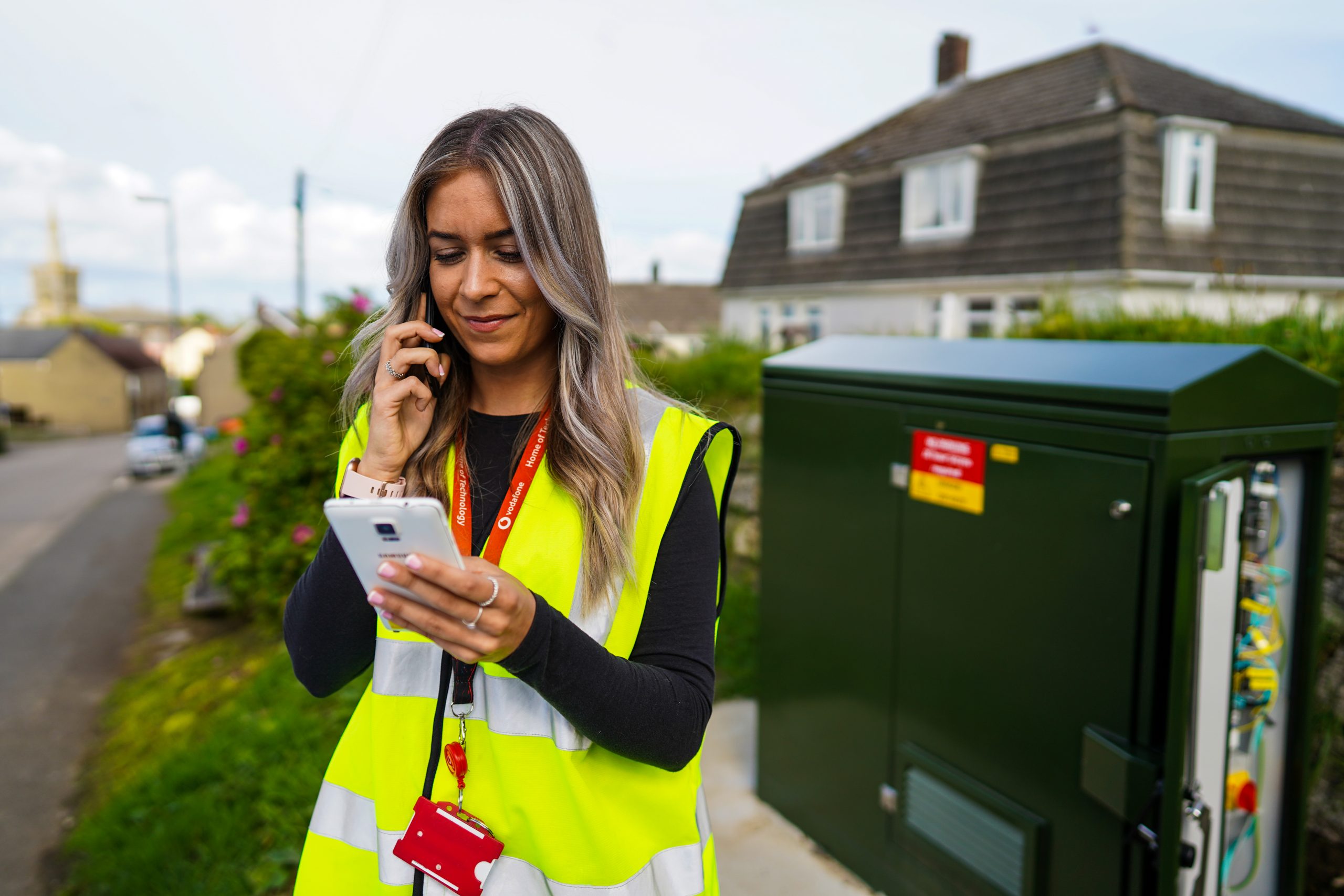With the results of the unusual bin lorry tests in hand, the predominantly rural northern county is now focused on its other connectivity needs.
Northumberland County Council has discovered that, following Vodafone’s retirement of its 3G network in February 2024, its mobile coverage has actually improved in the county. Vodafone mobile signal now reaches 92% of the county, up from 89%, while download speeds have improved by 10%. Unusually, the results were uncovered by the council’s fleet of bin lorries.
The roving rubbish removers were retrofitted to test mobile signal coverage by startup company Streetwave, working in tandem with the council. Each lorry was fitted with four off-the-shelf smartphones, with each one running download, upload and latency tests. These tests ran as the bin lorries did their rounds in the residential areas of Northumberland – once every 20 metres or so in rural areas and once every 5m in urban areas. Each bin lorry also ran other tests, such as those measuring signal strength and GPS, every second.
Vodafone UK successfully switches off 3G across the UK – boosting 4G and 5G
The last remaining 3G radio frequencies will be repurposed to strengthen Vodafone's 4G and 5G services in the UK.
The results of the bin lorry survey were welcome news for Councillor Wojciech Ploszaj, Cabinet Member for Corporate Services, who had been concerned about 3G’s retirement given the county’s other connectivity challenges, including the upcoming retirement of analogue landlines. “It’s very rural. Something like 95% of the population lives in about 5% of Northumberland. We’ve got places where there is no mobile connectivity and very, very limited broadband as well,” Wojciech told Vodafone UK News.
With worries about Vodafone’s retirement of 3G now allayed, Wojciech and the council can focus on building for the future, rather than worry about that old, outdated technology. As they await the rollout of the Shared Rural Network, they’re also investigating options such as ‘small cells’, also known as mini-masts, to plug highly localised coverage gaps. “As they’re modular, they can do all sorts of other things – CCTV, environmental monitoring, car park monitoring,” Wojciech pointed out.
Vodafone meets Partial Not Spot target as part of Shared Rural Network programme
Through the SRN programme, Vodafone has successfully introduced 4G to more than 400 rural locations.
Northumberland County Council also wants to ensure that as many households as possible have access to full fibre broadband, not just slower, less future-proof fibre to the cabinet connections. While the rollout is benefitting from the UK government’s Project Gigabit, there are other hurdles.
While full fibre broadband is now available to around 57% of homes in the UK as a whole, only 28% of them have actually taken up such connections according to Ofcom figures published in December 2023. Convincing some households and neighbourhoods of the benefits of full fibre, and thus the necessity of the associated infrastructure whether it’s subterranean ducting or telegraph poles, can be a personalised process.
Full Fibre broadband: Everything you need to know
Full fibre broadband is in the news a lot, but there are crucial differences between the types you can get. We explain what those are and why it matters.
This ability to prioritise and focus with the aid of independent survey data is one that Streetwave hopes to bring to as many councils across the UK as possible, not just Northumberland. “It’s not a one-and-done hobbyist project. We’re on the path to mapping the whole country”, said George Gibson, one of Streetwave’s co-founders.
George emphasises the many benefits of the bin lorry approach, from reduced carbon emissions compared to specialist, dedicated test vehicles and the greater comprehensiveness and reliability of Streetwave’s test data compared to crowdsourced testing. The startup has conducted its trademark bin lorry mobile coverage surveys in 30 local authority areas over the course of a year. It’s now in discussions with another 50 councils.
Back in Northumberland, the Council remains focussed on new technologies and how they can benefit Council service provision, residents, businesses and visitors. From ensuring the safety of social workers to the possibility of warning tourists about the dangers of incoming tides on the Lindisfarne causeway. As Wojciech puts it, “it’s about keeping our people safe and connected”.
Stay up to date with the latest news from Vodafone by following us on LinkedIn and Twitter/X, as well as signing up for News Centre website notifications.
From quarries to manhole covers: how Vodafone is thinking differently to improve 4G network coverage
By Scott Petty, Chief Technology Officer, Vodafone UK Building masts is the most obvious way of improving mobile coverage, but it’s not the only way. Even if the process for getting these masts approved and built was fast, easy and inexpensive, it’s not always the right approach. At Vodafone, our cunningly imaginative network team …
Continued ![stock image of a refuse collector and a wheelie bin in front of a bin lorry [Adobe Stock] stock image of a refuse collector and a wheelie bin in front of a bin lorry](https://www.vodafone.co.uk/newscentre/app/uploads/2024/07/Garbage-Removal-Man-Adobe-Stock.jpg)









